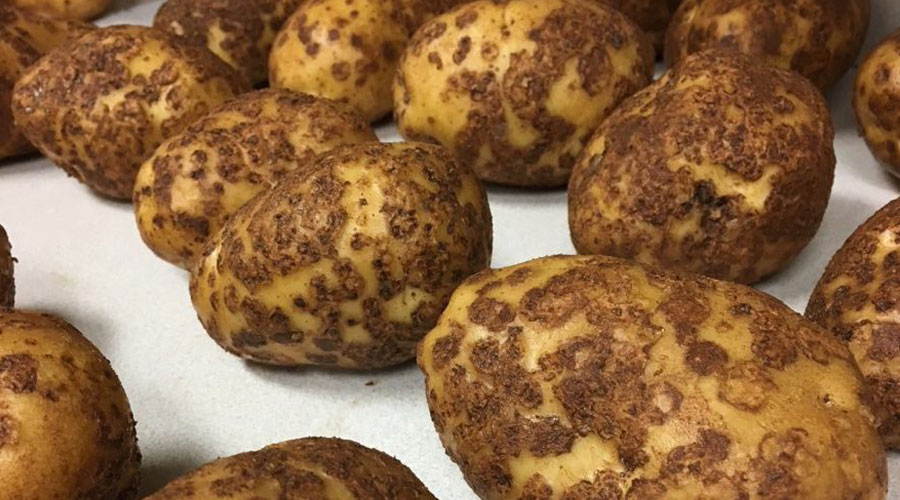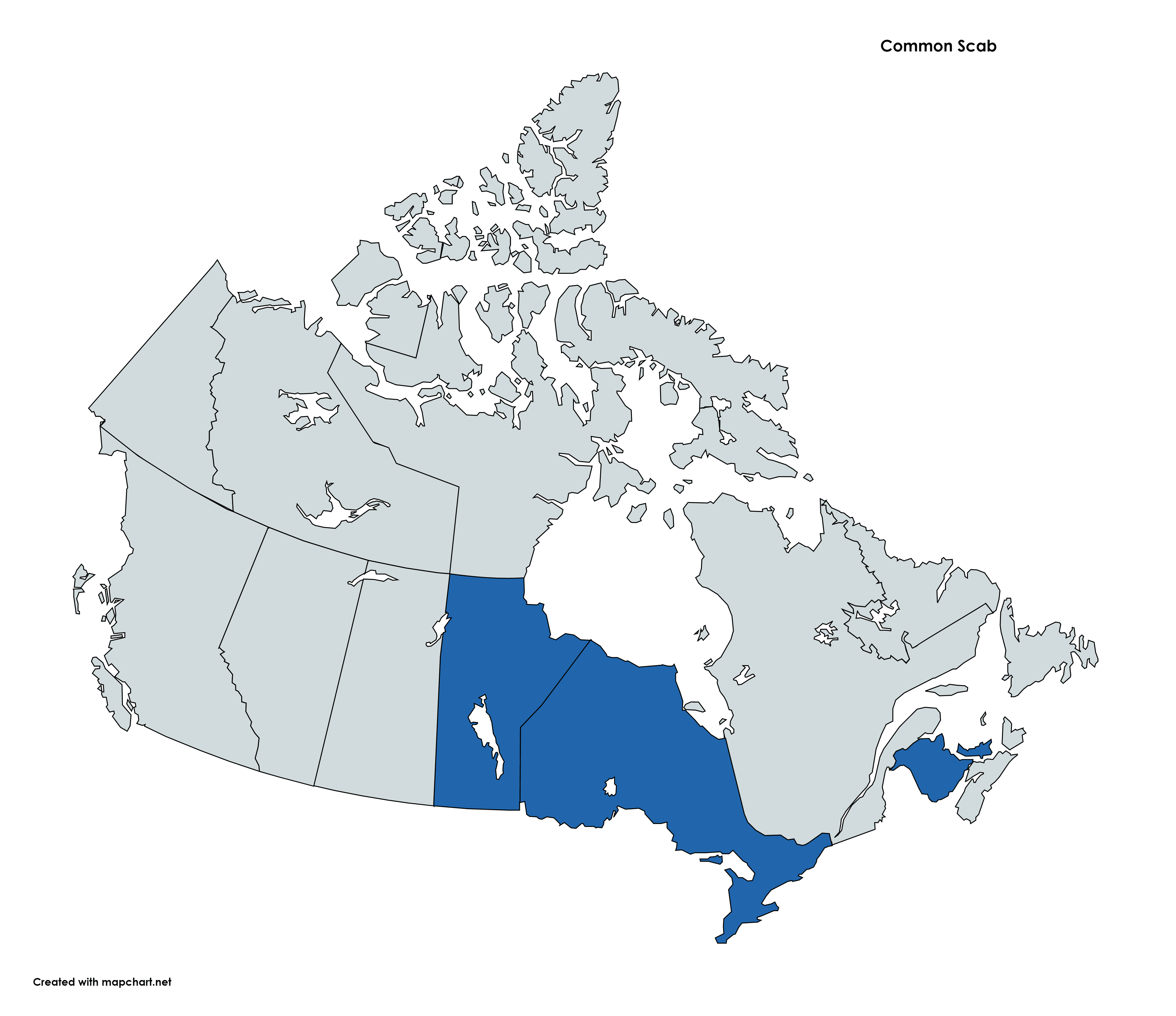
Photo credit: SpudsSmart
Lead Researcher
Claudia Goyer | Agriculture and Agri-Food Canada (AAFC), Fredericton, NB
Objectives
To evaluate several methods to control common scab of potato under a range of environmental conditions and soil types across Canada.
Early Outcomes of Research
- A collection of Streptomyces causing common scab was obtained from tubers collected in PE, NB, and MB and are currently being classified using a DNA profiling technique. So far, at least 24 different genetic groups were identified.
- Variants of Riverdale Russet and Prospect that were obtained using somaclonal variation, a technique that can increase resistance to common scab, showed a modest reduction in the severity of the disease compared to the parental line. The reduction in disease severity might not be sufficient to warrant changing the existing varieties.
- Several approaches to control common scab were evaluated in MB and PE including nurse crops, biopesticide, compost, mustard meal, wood bark extract, ammonium lignosulfonate products and sulfur-based fertilizers; however none of these approaches resulted in a decrease in common scab severity.
- Tubers from Manitoba with typical common scab symptoms, atypical symptoms, and russeting were tested for the presence of pathogenic Streptomyces Only tubers with typical symptoms tested positive for the presence of pathogenic Streptomyces spp. The result will improve the evaluation of common scab in Manitoba.
- A method to quantify isothiocyanates, the volatile compounds produced via the degradation of mustard meal and mustard residues, was developed and optimized.
Key Messages for Growers
- This project will provide a better understanding of the diversity of the common scab pathogen in NB, PE and MB in order to improve detection of specific species or strains of the common scab pathogen.
- Tools to evaluate the effects of the agricultural practices on disease severity, including a molecular tool to quantify the common scab pathogen and the measurement of isothiocyanates, are ready to be used.

